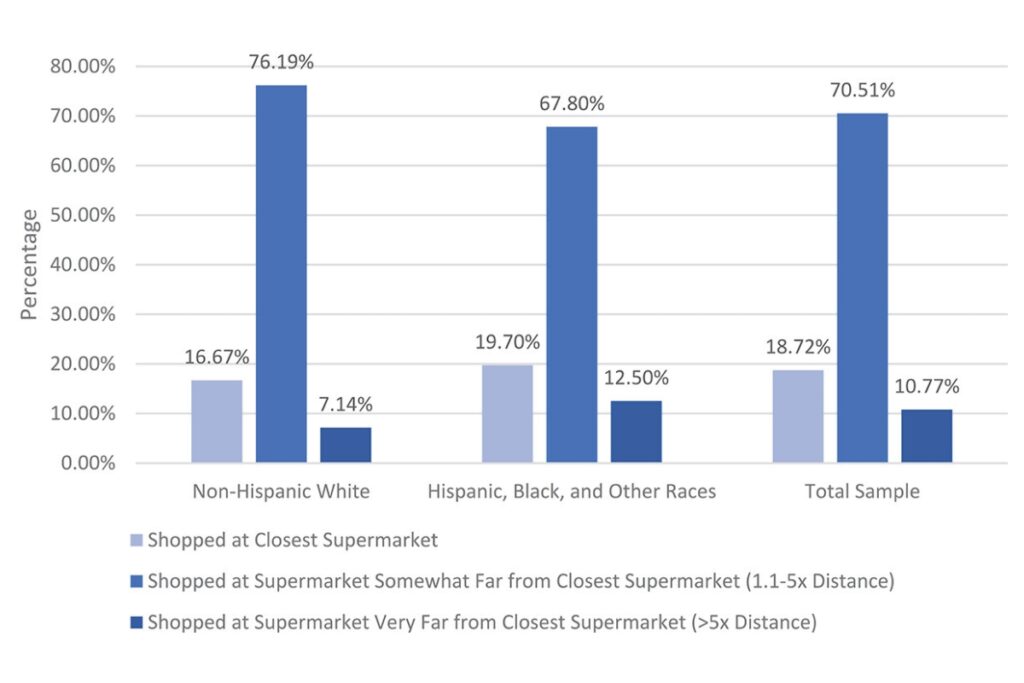Grocery Shopping Patterns and Access Inequities
People of color report traveling longer distances to get to their preferred grocery store compared to their White counterparts.

Read Time: 2 minutes
Published:
Envision your go-to grocery store – what makes it your top choice? Is it the store closest to where you live? The one with the best deals, or the highest quality of food? Maybe it’s the Goldilocks store of these factors, offering the best prices, quality, and location.
Price, location, and quality are the three main reasons people decide where to buy groceries, assuming they have multiple options. Access to grocery stores is an important determinant of health. Most research on grocery store access focuses on how close a person lives to the nearest supermarket. However, the closest store may not be the most used due to other factors affecting people’s choices.
Kathryn M. Janda and collaborators examined whether individuals shop for food at the store closest to their home, and if race and ethnicity factored into food access in Central Texas. They surveyed 393 residents of Travis County, Texas.

On average, respondents lived 1.66 miles from the nearest supermarket but traveled 5.26 miles to their preferred store. Regardless of ethnic background, most individuals shopped at supermarkets that were somewhat far away – 1.1 to 5 times the distance of the closest one. However, more people of color (12.5%) reported traveling very far (more than 5 times the distance) compared to just 7.1% of White respondents. Respondents cited the quality of food and the availability of desirable culture-specific products as the most common reasons they shopped at more distant supermarkets.
Urban dwellers typically live closer to supermarkets than those who live in more rural areas. But distance isn’t everything when shopping. Food affordability, quality, and a market’s cultural adequacy influence consumer choices, as well.



